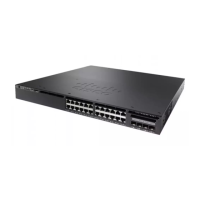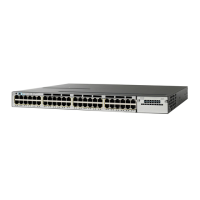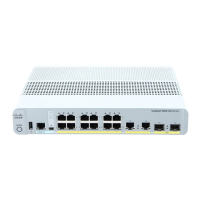switchport mode
To configure the VLAN membership mode of a port, use the switchport mode command in interface
configuration mode. To reset the mode to the appropriate default for the device, use the no form of this
command.
switchport mode {access| dynamic | {auto| desirable}| trunk}
noswitchport mode {access| dynamic | {auto| desirable}| trunk}
Syntax Description
Sets the port to access mode (either static-access or dynamic-access depending on the
setting of the switchport access vlan interface configuration command). The port is
set to access unconditionally and operates as a nontrunking, single VLAN interface that
sends and receives nonencapsulated (non-tagged) frames. An access port can be assigned
to only one VLAN.
access
Sets the port trunking mode dynamic parameter to auto to specify that the interface
convert the link to a trunk link. This is the default switchport mode.
dynamic auto
Sets the port trunking mode dynamic parameter to desirable to specify that the interface
actively attempt to convert the link to a trunk link.
dynamic desirable
Sets the port to trunk unconditionally. The port is a trunking VLAN Layer 2 interface.
The port sends and receives encapsulated (tagged) frames that identify the VLAN of
origination. A trunk is a point-to-point link between two devices or between a device
and a router.
trunk
Command Default
The default mode is dynamic auto.
Command Modes
Interface configuration
Command History
ModificationRelease
This command was introduced.Cisco IOS XE 3.3SECisco IOS XE 3.3SE
Usage Guidelines
Although visible in the CLI, the dot1q-tunnel keyword is not supported.Note
A configuration that uses the access,or trunk keywords takes effect only when you configure the port in the
appropriate mode by using the switchport mode command. The static-access and trunk configuration are
saved, but only one configuration is active at a time.
Command Reference, Cisco IOS XE Everest 16.5.1a (Catalyst 3650 Switches)
360
switchport mode

